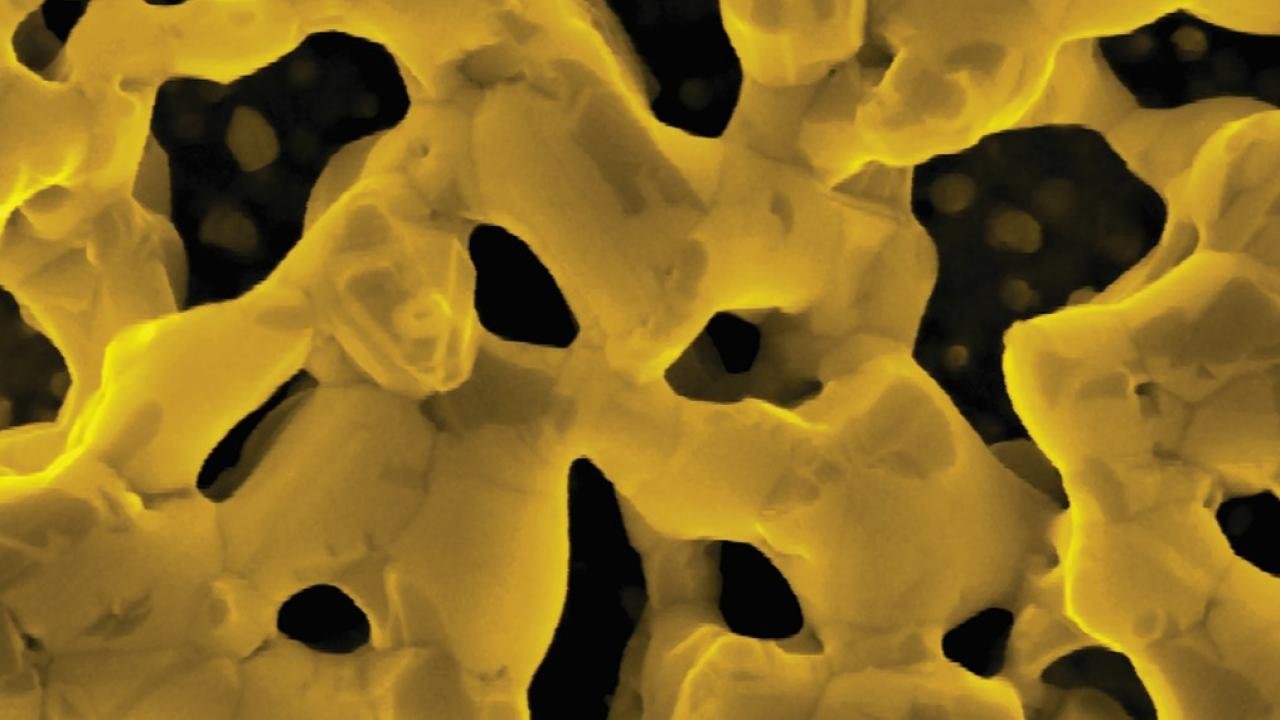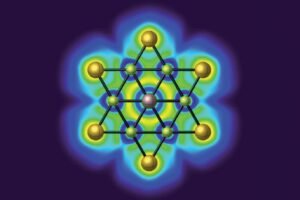Nanoporous metals are metals which contain pores or cavities in the nanometer scale. Their range of interesting properties and potential wide range of applications has led to much research interest in them.
Nanoporous metals are usually synthesised from a starting alloy, from which the more reactive metal is selectively leached out to leave behind a porous structure. The composition of the starting alloy greatly influences the property of the nanoporous structure synthesised. The percentage of the noble element must be sufficiently low to allow for the formation of continuous pores. However, it must not be too low, or the nanoporous structure would fall apart.
Nanoporous metals have interesting physical, chemical and even biological properties. Despite their porous structure, nanoporous metals can possess a strength close to that of the normal structure of the metal as long as there are few cracks in the structure. However, due to their high surface area, they are very effective heterogeneous catalysts. In addition, the unique distorted lattice structure of nanoporous metals results in it having a higher energy state, enhancing reactivity and thus further increasing the catalytic activity of nanoporous metals.
Nanoporous gold has also been shown to exhibit an antimicrobial effect, catalysing reactions which occur in bacterial cells which lead to cell death. In addition, due to the small pores dispersed throughout nanoporous materials, they have been proposed as a potential material for membranes.
References
Qiu, H. -., Peng, L., Li, X., Xu, H. T., & Wang, Y. (2015). Using corrosion to fabricate various
nanoporous metal structures. Corrosion Science, 92, 16-31.
Vega, V., Gelde, L., González, A., Prida, V., Hernando, B., & Benavente, J. (2017). Diffusive transport through surface functionalized nanoporous alumina membranes by atomic layer deposition of metal oxides. Journal of Industrial and Engineering Chemistry, 52, 66-72. doi:10.1016/j.jiec.2017.03.025
Yamamoto, Y. (2014). Perspectives on organic synthesis using nanoporous metal skeleton catalysts. Tetrahedron, 70(14), 2305-2317. doi:10.1016/j.tet.2013.09.065









